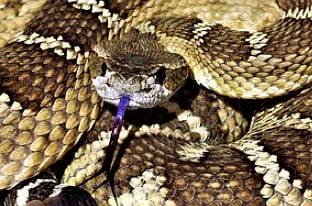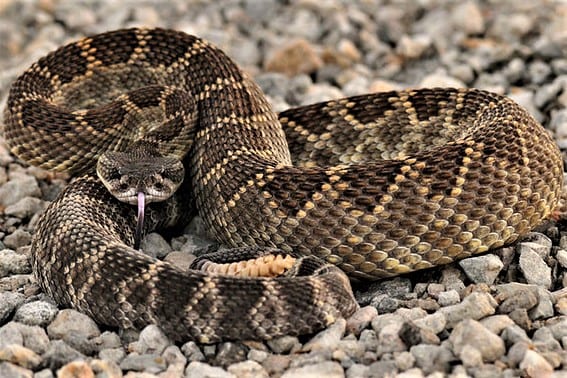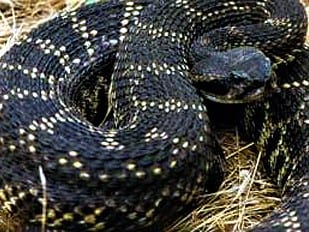Southern Pacific Rattlesnakes can be found throughout California, including the St. Francis Dam site. The rattlesnake is a highly venomous snake. It is a pit viper, and it seeks out prey by using a heat-sensing organ that can be found on both sides of the snake’s face between the nostrils and the eye. Other pit vipers include Copperheads and Water Moccasins.

For some unknown reason, there is more of the neurotoxin in the snake’s venom than in the past, so it is becoming more dangerous. However, not all bites contain venom. If a snake bites someone and injects all it’s venom, it cannot kill prey again until the venom is replaced. Therefore, often the snake will deliver a “dry bite” to try to frighten away an aggressive human. If you are bitten, note the time with a sharpie pen at the site of the bite, every 20 minutes following the bite, put a line around any redness that you see, and again, note the time. Get to a hospital immediately. Do not delay. To delay could mean the loss of a limb or worse.

The Southern Pacific Rattlesnake can vary greatly in color from tan to dark brown, grey and even slightly greenish. The head is a triangular shape, as are all pit vipers. Young rattlesnakes have a “button” at the end of their body and have not yet developed a rattle. Rattlesnakes add a rattle each time they molt, which may be several times a year. They may also break a rattle loose. Make sure you identify the head first. Rattlesnakes have a keen sense of smell and vision and they can also detect vibrations in the ground, so they will know you are coming before you ever see them.

Rattlesnakes use their rattles as a warning, and they can also hiss to frighten away someone who gets too close. If a rattlesnake is not attacked and killed by a predator, it can live up to 20 years. I have seen a Roadrunner (bird) attack and kill a rattlesnake, and I’ve also seen a cougar kill and eat a rattlesnake as well. Other predators might include birds of prey and coyotes.

The USGS reports that rattlesnake venom can remain toxic for up to 27 years, even when it is dried.
